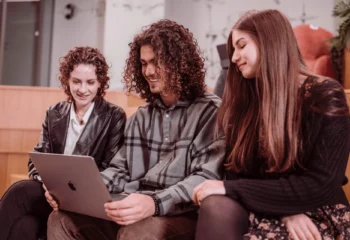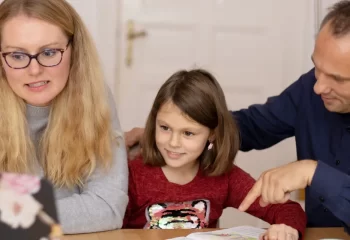This article is part of the Innovation in Education Guide. Learn all about Educational Technology, Modern Teaching Methods, and Innovative Classrooms.
Innovations are essential for today’s world. More so, learning drives innovations. So, why can’t it be the other way around as well?
Teaching methods need a change according to society’s changing dynamics.
Innovative learning means a lot, and it all comes down to the people – the learner and the teacher. Let’s all help to learn to innovate by innovating learning. And we are not talking mainly of technological innovations, as this is not the main innovation that learning can have.
Innovative learning has as a primary goal the development of self-directed learners, who are flexible with their knowledge and learn as they go, adapt to the situation, use their critical thinking and simply put – learn by exploring. This exploration comes in various forms – physical, technological, mental, etc.
We must be aware that age-appropriate content is necessary but is not the only content students should come by. There is that thing called “own ability and skills”, and students learn and develop at their own pace. Thus, here is where an innovative learning environment comes into play. It allows children to learn what they need, where they need it, how they need it.
You do not have to change the basis of a school or the healthy environment a school has; you need to adapt to 21st-century changes and develop an environment that can foster the knowledge and skills required in the 21st century.
Future will tell that this new education system will help build a flourishing economy and create the proper global cultural and social environment.
An innovative learning environment has key elements – learners, educators, content and resources. The skills and capacities that matter in the 21st learning environments are global awareness, creativity, collaborative problem-solving, self-directed learning. And the learning environment needs to be able to help students achieve these goals. This is why there is a need to update the curriculum, the learning ways, the settings, the basis behind the courses – all of these should be adapted to create a student ready for the 21st century and the future needs of the working environment.
Innovative Learning Strategies
What does innovation in education mean?
Can we help sustain and develop this innovative education as parents and as educators?
We can give an extra boost of trust to our students.
Allowing students to open their minds and develop skills that they cannot learn from a textbook is a great way to implement innovative learning strategies.
Innovative learning strategies depend a lot on the teachers, as they are the ones that create the spirit and nature of the room. Using their experiences, knowledge on the course and their teacher’s touch, they can easily make those innovative learning experiences that today’s students need.
Innovative learning strategies can be
– Letting the students pick the lesson they want to learn
– Giving the students the possibility to self assess their work
– Asking the students to make the connections from their real-life to the lesson they learned in the classroom
– Letting the students explore different answers and seeing the wrong answers not as a mistake but as an experience to learn from
– Mixing the textbook with videos, storytelling
– Challenging students to solve a problem
Argumentation learning
Argumentation learning is an excellent strategy for keeping students active and engaged. Students argue their ideas and those of their colleagues in a technical way. Teachers use this innovative strategy through sparking meaningful discussions, which lead to listening, taking turns and constructively responding to their colleagues and teachers.
Analytics of emotions
An effective learning strategy is the ability to tackle emotions. They are usually not the primary consideration as far as education and learning are essential to consider students’ feelings and recognise them.
This learning strategy helps teachers be more responsive to the whole child and help with the different dispositions of the students.
Computational thinking
Computational thinking is an innovative learning strategy that uses thinking and problem solving as the primary approaches. It consists of big decomposing problems into smaller ones. It is a great strategy to be used in many science classes such as mathematics, physics, art and others. It depends a lot on the adaptability of the teacher.
Context-based learning
The curriculum has always been a big part of the education process. However, disposing of a bit of flexibility as far as the curriculum is concerned. Learning needs to have a root, but this root should be able to mould on the context. This context depends on the learner’s capacities and adaptabilities.
The context-based learning is basically about creating content and making the most out of it – having conversations, making notes, interacting with whatever surroundings. This is done with the help of a teacher when visiting something, being outside, interacting with other surroundings.
Crossover learning
Crossover learning is an innovative learning strategy that consists of learning in informal settings – such as museums or formal settings with informal discussions. Either way, students get the most out of this experience by learning from everyday life things that raise their interests most.
Embodied learning
Leaving aside the innovative learning types that ask for thinking and self-awareness, we turn and see that there also is the embodied innovative learning strategy. This learning type is perfect for increasing the self-awareness of the body. It is all about using what you have to help the mind and body, work together in synchrony. This way to engage learners helps create a mindful approach to learning and wellbeing.
Incidental learning
Teachers can also use the incidental learning that students live daily without noticing. This type of learning helps them grow and develops their self-reflections.
Examples of innovative learning
The innovative learning environment that struggles to come out in some educational institutions does not need too much push if the mindset of the people in charge is flexible and creative.
Innovative learning can be formed of various tasks such as :
– Exercises that help create a greater diversity of learning, moral and cognitive conduct
– Developing the spectrum of micro-technologies
– Having a diverse set of tasks to evaluate students by – written, activities, personal, presentations, groups.
Innovative learning ideas for students during lockdown
Lockdown with COVID-19 made teachers develop different creative ideas to keep students engaged in their classroom. While most of the classes were online, students had to get accustomed to this type of learning. Teachers couldn’t expect to have the same engagement rate from the beginning from the students.
What they used and still use are:
– Virtual online meetings
– Informal discussions on social media
– Groups and online games
– Autonomous learning
We learn through social interaction, so online or face to face, social interactions are what helps us build our behavioural and affective systems. While autonomous learning helps students grow, social interactions help students push their boundaries.
Innovative Learning FAQ
What is innovation for students?
For students, innovation means everything that does not focus on rules. Having rules as far as education, classroom, courses, and learning environments is a way to surpass their creative self. Learning in an innovative environment, they can use all their creativeness to become fit for the future.
What is innovative learning?
Innovative learning is a way of learning that focuses on students and their needs. There is no longer a barrier between the teachers and students; there is a connection that helps students grow and be more ready for the real world.
Innovative learning means a development of the vision, of the learning pedagogy, of the policies, facilities and resources, curriculum, teachers, community and assessment. (TECHNOLOGY-RICH INNOVATIVE LEARNING ENVIRONMENTS, February 2013)
What makes an innovative learning experience?
An innovative learning experience focuses on the “learners as its core participants, encourages their active engagement and develops in them an understanding of their own activity as learners.” (The Nature of Learning, 2012)




